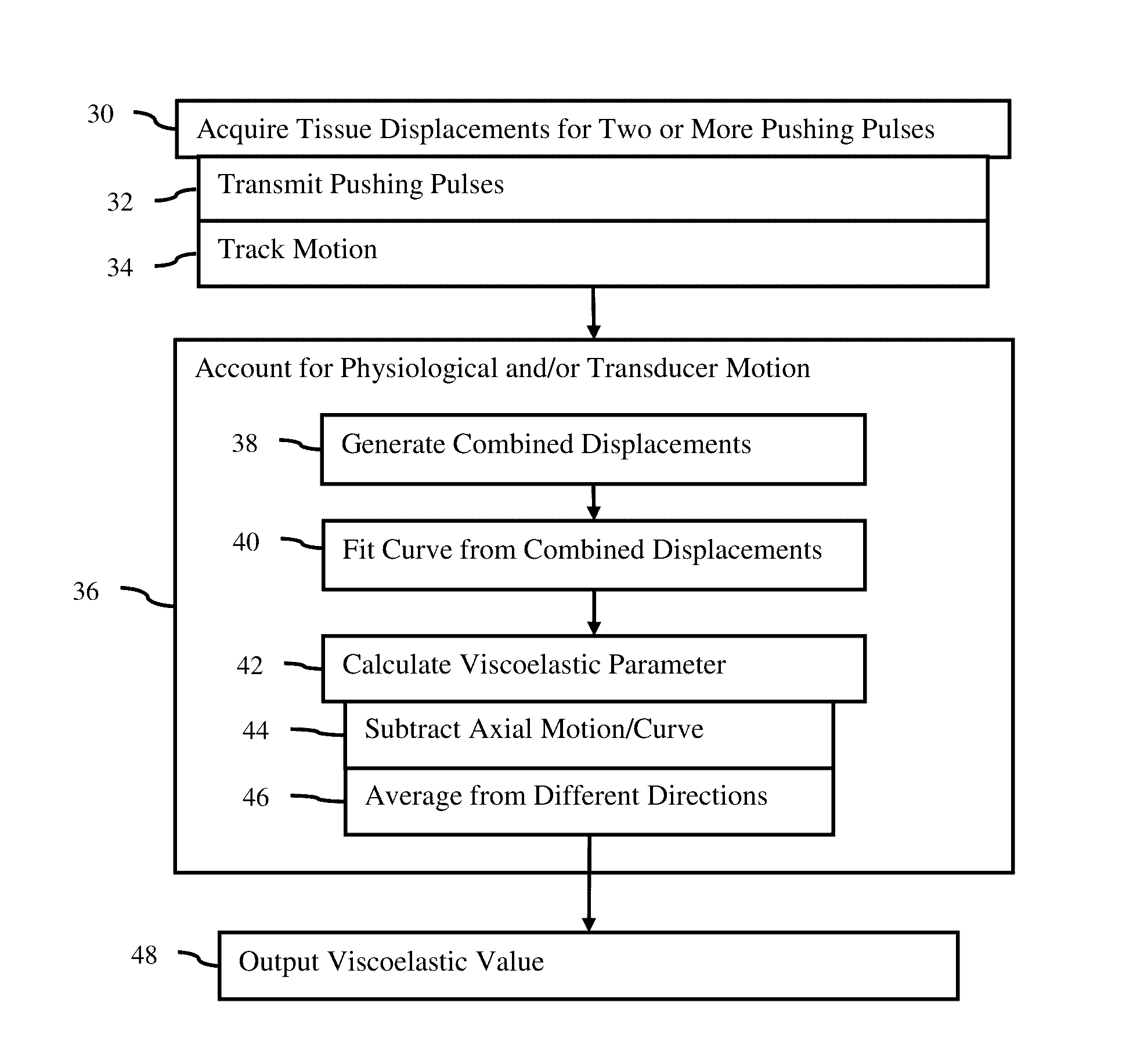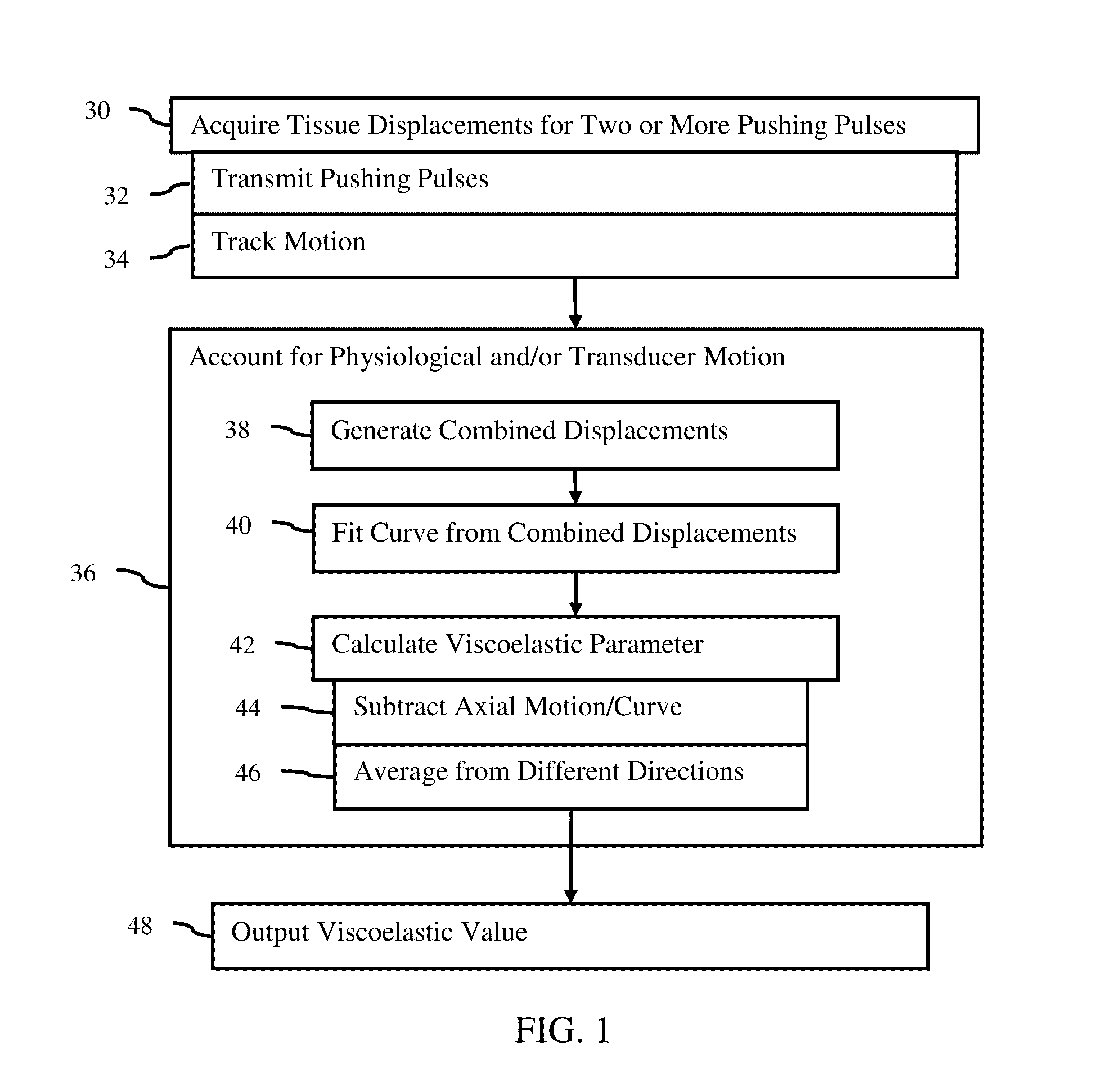Adaptive motion estimation in acoustic radiation force imaging
- Summary
- Abstract
- Description
- Claims
- Application Information
AI Technical Summary
Benefits of technology
Problems solved by technology
Method used
Image
Examples
Example
DETAILED DESCRIPTION OF THE DRAWINGS AND PRESENTLY PREFERRED EMBODIMENTS
[0019]Adaptive physiological and transducer motion estimation is provided in acoustic radiation force impulse or imaging (ARFI) applications. Axial and lateral components of physiological and / or transducer motion are adaptively estimated and corrected. Multiple ARFI excitation pulses are used to isolate physiological and transducer displacements from ARFI-induced tissue displacement. In one embodiment, a signal pattern is generated multiple times and is used to detect background (physiological) motion. ARFI excitations are used to generate tissue deformation as the signal pattern. Physiological motion is filtered out in shear wave velocity or other ARFI imaging.
[0020]FIG. 1 shows a method for acoustic radiation force ultrasound imaging. In general, multiple pushing pulses are transmitted, and corresponding multiple displacement profiles are measured for a location. The axial component of physiological motion may...
PUM
 Login to View More
Login to View More Abstract
Description
Claims
Application Information
 Login to View More
Login to View More - R&D
- Intellectual Property
- Life Sciences
- Materials
- Tech Scout
- Unparalleled Data Quality
- Higher Quality Content
- 60% Fewer Hallucinations
Browse by: Latest US Patents, China's latest patents, Technical Efficacy Thesaurus, Application Domain, Technology Topic, Popular Technical Reports.
© 2025 PatSnap. All rights reserved.Legal|Privacy policy|Modern Slavery Act Transparency Statement|Sitemap|About US| Contact US: help@patsnap.com



